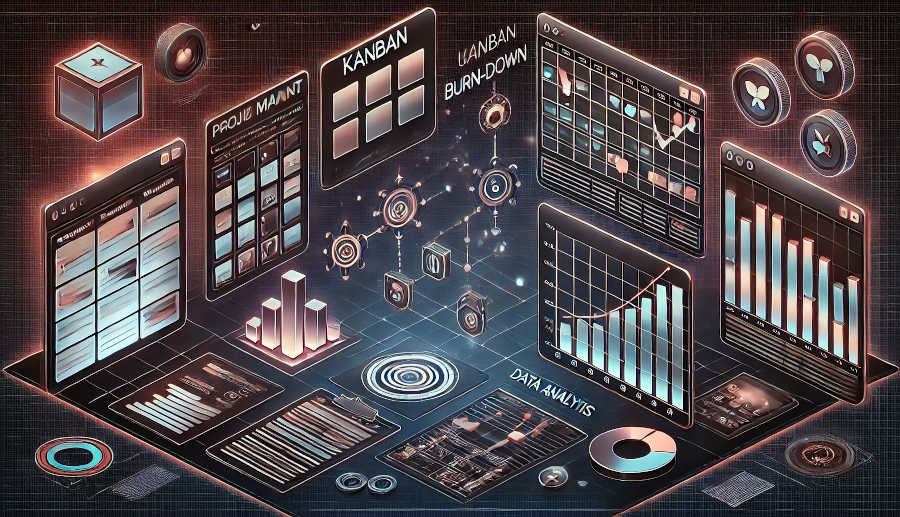Understanding IPD and Its Flowchart
Integrated Project Delivery is a method that integrates people, systems, business structures, and practices into a process that collaboratively harnesses the talents and insights of all participants to optimize project results, increase value to the owner, reduce waste, and maximize efficiency through all phases of design, fabrication, and construction. The IPD flowchart is a visual representation of this process, outlining the roles and responsibilities of each stakeholder, the sequence of activities, and the decision points where risks can be identified and mitigated.
The IPD flowchart is not just a static document; it is a dynamic tool that evolves as the project progresses. It serves as a roadmap for the project team, guiding them through the complex landscape of project delivery. By clearly defining the workflow and the interactions between different parties, the IPD flowchart helps to streamline communication and reduce the likelihood of misunderstandings or miscommunications, which are common sources of project risks.
Moreover, the IPD flowchart emphasizes early involvement of all stakeholders, including architects, engineers, contractors, and owners. This early involvement is crucial because it allows for the identification of potential risks at the planning stage, where they can be most effectively managed. By bringing together diverse expertise early on, the IPD approach fosters a collaborative environment that is inherently less risky than traditional sequential project delivery methods.
Identifying and Mitigating Risks
One of the primary advantages of the IPD flowchart is its ability to identify risks early in the project lifecycle. The flowchart outlines the sequence of activities and the decision points where risks are most likely to occur. By mapping out these critical junctures, the project team can proactively address potential issues before they escalate into full-blown problems. This proactive approach is a fundamental shift from the reactive risk management strategies often employed in traditional project delivery methods.
The IPD flowchart also facilitates the mitigation of risks through its emphasis on collaboration and shared responsibility. In an IPD project, all stakeholders are aligned in their goals and are incentivized to work together to achieve them. This alignment reduces the likelihood of finger-pointing and conflict, which can be significant sources of risk in traditional projects. Instead, the IPD flowchart encourages a culture of accountability and teamwork, where risks are collectively identified and solutions are collaboratively developed.
Furthermore, the IPD flowchart includes built-in checkpoints where the project team can review progress and assess risks. These checkpoints serve as opportunities to make adjustments and corrections, ensuring that the project stays on track. By regularly reviewing the flowchart and the project's progress against it, the team can identify deviations from the plan and take corrective action promptly. This continuous monitoring and adjustment process is a key component of effective risk management in IPD projects.
Enhancing Communication and Collaboration
Effective communication is the cornerstone of any successful project, and the IPD flowchart plays a pivotal role in enhancing communication among project stakeholders. The flowchart provides a clear visual representation of the project's workflow, making it easier for team members to understand their roles and the dependencies between different tasks. This clarity reduces the chances of miscommunication and ensures that everyone is on the same page, which is essential for managing risks.
The IPD flowchart also promotes collaboration by fostering a sense of shared responsibility among stakeholders. In traditional project delivery methods, different parties often work in silos, with limited interaction until the construction phase. This lack of collaboration can lead to a lack of alignment and increased risks. In contrast, the IPD flowchart encourages continuous interaction and collaboration throughout the project lifecycle, ensuring that all stakeholders are engaged and informed.
Additionally, the IPD flowchart facilitates the use of collaborative tools and technologies, such as Building Information Modeling (BIM) and project management software. These tools integrate with the flowchart, providing real-time data and insights that help the team to make informed decisions. By leveraging these technologies, the IPD flowchart enhances the team's ability to monitor progress, identify risks, and implement mitigation strategies. This integrated approach to communication and collaboration is a powerful tool for reducing project risks.
Leveraging the IPD Flowchart for Continuous Improvement

The IPD flowchart is not just a tool for managing risks during the project lifecycle; it is also a mechanism for continuous improvement. By documenting the project's workflow and the outcomes of risk management efforts, the flowchart provides valuable data that can be analyzed to identify patterns and trends. This data-driven approach allows the project team to refine their risk management strategies and improve their processes for future projects.
The IPD flowchart also supports the development of best practices by capturing the lessons learned from each project. As the team encounters and resolves risks, they can document their experiences and share them with other teams. This knowledge-sharing process helps to build a repository of best practices that can be applied to future projects, further reducing risks and improving project outcomes.
Moreover, the IPD flowchart encourages a culture of learning and innovation within the project team. By continuously reviewing and updating the flowchart, the team can experiment with new approaches and techniques, testing their effectiveness in real-world scenarios. This iterative process of experimentation and refinement is a powerful way to drive continuous improvement and reduce risks in future projects.
Conclusion
In conclusion, the IPD flowchart is a powerful tool for reducing project risks through its emphasis on collaboration, communication, and continuous improvement. By aligning the interests and efforts of all stakeholders, the IPD flowchart creates a unified approach to project delivery that is inherently less risky than traditional methods. The flowchart's ability to identify and mitigate risks early in the project lifecycle, enhance communication and collaboration, and support continuous improvement makes it an indispensable asset for project managers.
As organizations continue to face increasingly complex projects and ever-changing business environments, the importance of effective risk management cannot be overstated. The IPD flowchart provides a structured and collaborative approach to managing risks, ensuring that projects are delivered on time, within budget, and to the satisfaction of all stakeholders. By embracing the principles of Integrated Project Delivery and leveraging the IPD flowchart, project managers can navigate the challenges of project risk with confidence and achieve successful outcomes.
FAQ
1.How does the IPD flowchart differ from traditional project management tools?
The IPD flowchart differs from traditional project management tools in several key ways. Firstly, it emphasizes early involvement of all stakeholders, which is not typically a focus in traditional sequential project delivery methods. Secondly, the IPD flowchart is a dynamic tool that evolves as the project progresses, whereas traditional tools are often static and less adaptable. Finally, the IPD flowchart fosters a culture of collaboration and shared responsibility, which is a fundamental shift from the siloed approach common in traditional project management.
2.Can the IPD flowchart be used for projects outside of construction?
Yes, the principles of Integrated Project Delivery and the IPD flowchart can be applied to a wide range of projects outside of construction. The core concepts of collaboration, early stakeholder involvement, and continuous improvement are relevant to any project where multiple parties are involved and risks need to be managed. Whether it's a software development project, a product launch, or a marketing campaign, the IPD flowchart can provide a structured approach to reducing risks and improving outcomes.
3.How can organizations implement the IPD flowchart effectively?
Organizations can implement the IPD flowchart effectively by first establishing a culture of collaboration and shared responsibility. This involves training team members on the principles of Integrated Project Delivery and ensuring that all stakeholders are aligned in their goals. Next, organizations should develop a clear and comprehensive IPD flowchart that outlines the project's workflow, roles, and responsibilities. Finally, continuous monitoring and adjustment of the flowchart are essential to ensure that it remains relevant and effective throughout the project lifecycle.
ARTICLE TITLE :How to reduce project risks through IPD flowchart? ,AUTHOR :ITpmlib

















